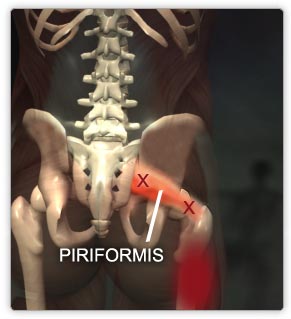 Urologic Chronic Pelvic Pain Syndromes (UCPPS) refers to pain associated with the bladder (ie, interstitial cystitis/painful bladder syndrome, IC/PBS) and the prostate gland (ie, chronic prostatitis/chronic pelvic pain syndrome, CP/CPPS).
Urologic Chronic Pelvic Pain Syndromes (UCPPS) refers to pain associated with the bladder (ie, interstitial cystitis/painful bladder syndrome, IC/PBS) and the prostate gland (ie, chronic prostatitis/chronic pelvic pain syndrome, CP/CPPS).
Researchers from Kyung Hee University, in Seoul, Korea studied the effect of electroacupuncture.
First, the details.
- 39 men with this condition were randomly assigned to a treatment group for 6 weeks.
- Group 1: advice + exercise + 12 sessions of electroacupuncture
- Group 2, advice + exercise + 12 sessions of sham electroacupuncture
- Group 3, advice + exercise alone
- 6 acupuncture points were used to stimulate the sacral nerve and release the piriformis muscle (from the buttock to the top of the thigh bone [photo]) using an electrical pulse generator.
- Symptoms were assessed using the NIH-Chronic Prostatitis Symptom Index (NIH-CPSI).
- Prostaglandin E(2)Â levels in postmassage urine samples were also measured.
And, the results.
- At 6 weeks, pain-related symptoms decreased significantly in Group 1 (electroacupuncture) vs the other groups.
- All patients receiving electroacupuncture experienced at least a 6-point decrease in the NIH-CPSI total score vs 2 patients with sham-electroacupuncture and 3Â points in patients who received advice and exercise alone.
- Prostaglandin E(2) levels significantly decreased in the electroacupuncture group, but increased in the other 2 groups.
- High E(2) levels are associated with increased sensitivity to pain.
The bottom line?
The results are based on a very small group of patients. However, they are supported by earlier research.
2008: University of Science, Malaysia
- “After 10 weeks of treatment, acupuncture proved almost twice as likely as sham treatment to improve chronic prostatitis/chronic pelvic pain syndrome symptoms.”
2007: Columbia University Medical Center, New York
- “Findings, although limited, suggest the potential therapeutic role of acupuncture in the treatment of chronic prostatitis/chronic pelvic pain syndrome.”
A review of CAM for chronic prostatitis/chronic pelvic pain syndrome, including acupuncture, from 2005 is here.
6/7/09 15:41 JR